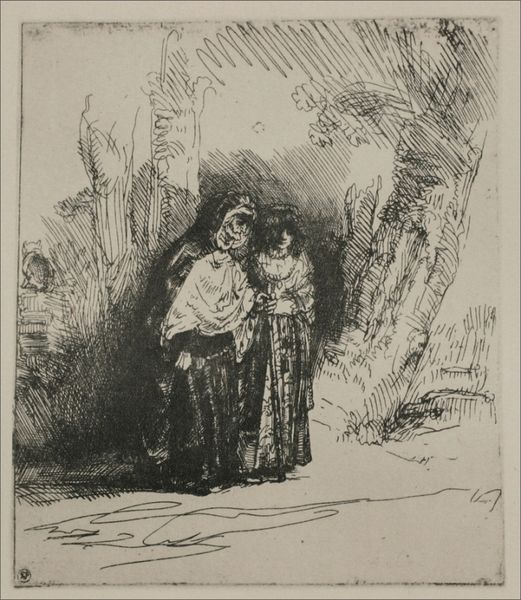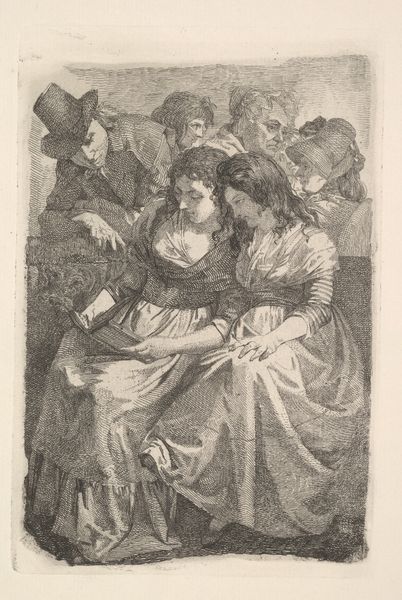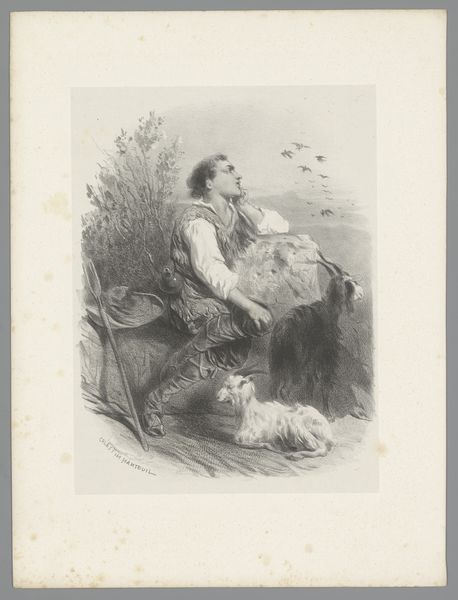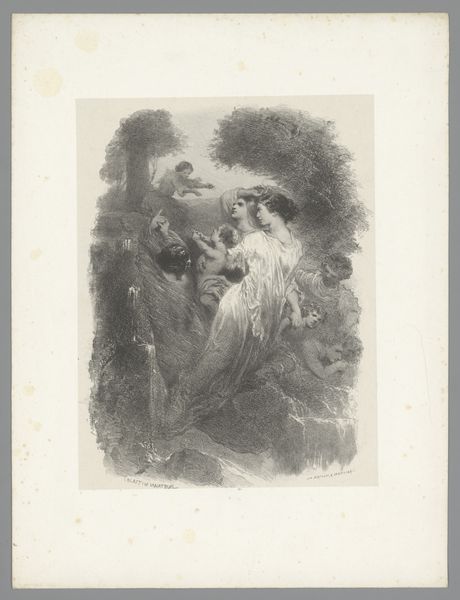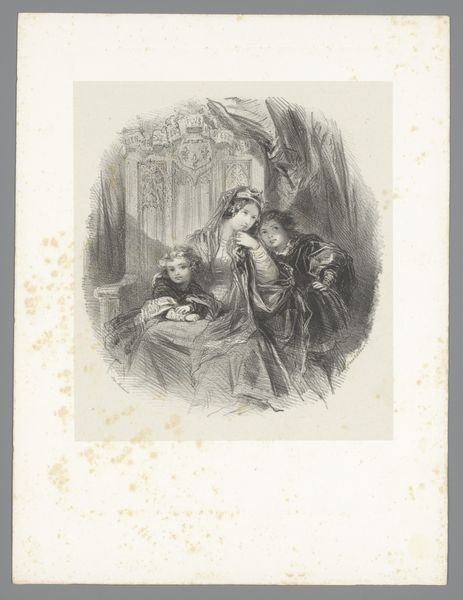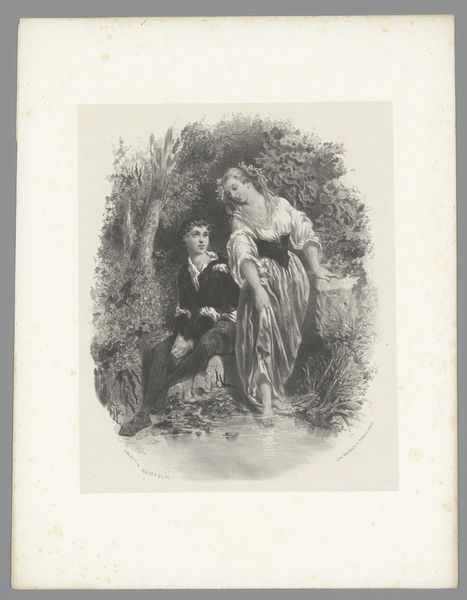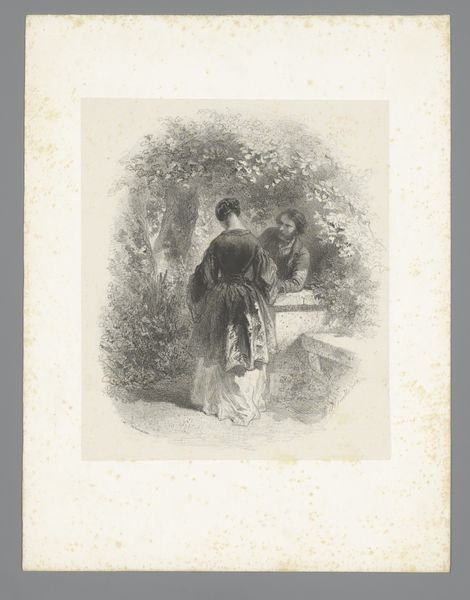
print, graphite
#
portrait
#
allegory
# print
#
caricature
#
figuration
#
romanticism
#
graphite
#
graphite
Dimensions: overall: 34.5 x 26 cm (13 9/16 x 10 1/4 in.)
Copyright: National Gallery of Art: CC0 1.0
Curator: The lithograph before us is entitled "The Woman Behind the Mask" by Célestin Nanteuil, dating to the 1830s. The scene presents a compelling allegory. What strikes you initially about its visual construction? Editor: Stark contrast. A delicate, somber woman meticulously removes a grotesque mask from an exaggerated figure. I'm curious about the graphite rendering; what do the fine lines communicate to us about labor and process here? Curator: Nanteuil, working in the Romantic style, employed graphite to explore the social theater of the 1830s. We see his keen interest in portraiture, blending it with caricature to dissect the hidden faces of the French bourgeoisie. What power dynamics are being revealed? Editor: The material rendering implies a skilled hand but also a repetitive one, given the textures and shading, and the subject asks us to look critically at how these elite members crafted and presented themselves in the period's burgeoning spectacle. It seems that performance and status came at a literal cost. Curator: Precisely! There’s a strong suggestion of a critical performance. The allegory delves into truth and deception. The removal of the mask may imply exposure of societal pretenses—perhaps a critique of the restored French monarchy or its aristocracy? Editor: Absolutely, there is an act of deconstruction happening right before us, in clear view! Note the fallen emblems by the subjects’s feet! I wonder about who the figures surrounding him are—are these spectators or colleagues aiding and benefiting from these false identities? Curator: Yes! What are the implications of this revelation for the viewers, ourselves? Nanteuil compels his audience to question public figures and the power structures they represent, which resonate strongly even today. Editor: By dissecting such a display of the bourgeoisie, Nanteuil challenges art's decorative function. A subversive, visual document demonstrating class-conscious making at work. Curator: Indeed, we witness not merely the depiction, but the deconstruction of an era’s defining performances of self and authority. Editor: Ultimately, it is in Nanteuil's chosen medium that we best appreciate not only an image of power, but its potential dismantling.
Comments
No comments
Be the first to comment and join the conversation on the ultimate creative platform.

